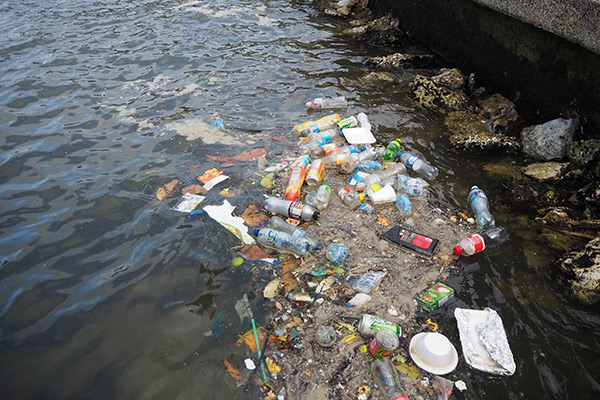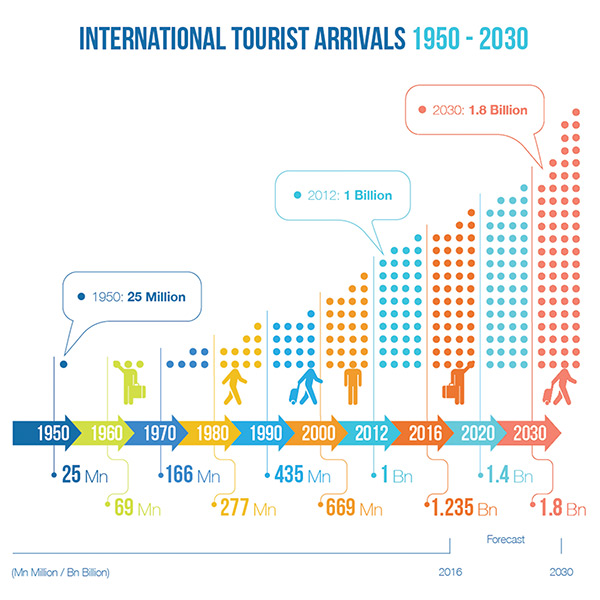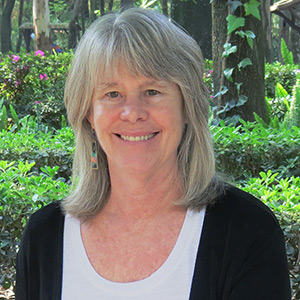Reducing the “invisible burden” of overtourism
As global tourism grows, the tolls on infrastructure related to transportation, lodging, energy, water, and sewage threaten natural and cultural icons.

San Pedro, Ambergris Caye, Belize, June 16, 2019: Single-use plastic in the sea (photo credit: Andy Korteling/Shutterstock)
Without an economic system to fund their protection and maintenance, tourist destinations from Belize to Barcelona risk becoming victims of their own success. That’s the key message in “Destinations at Risk: The Invisible Burden of Tourism” (March 2019), a report co-authored by Mark Milstein, clinical professor of management and director of the Center for Sustainable Global Enterprise (CSGE), Megan Epler Wood, managing director of CSGE’s Sustainable Tourism Asset Management Program (STAMP), and Kathleen Ahamed-Broadhurst, senior writer and researcher at EplerWood International. Commissioned by the Travel Foundation, the report was co-published with CSGE and EplerWood International.
A tourist destination like Ambergris Caye in Belize, with its crystal blue waters and barrier reef, generated about 18 percent of that country’s GDP in 2018. But the majority of tourism revenue gets funneled back to the national government, leaving the island without the funds to improve water and sanitation systems for residents and visitors. This has resulted in pollution and the degradation of water quality, damaging the Caye’s famous reef system and fisheries that attract tourists in the first place.
For many tourist destinations around the world, this “invisible burden” on the local economy threatens the attraction itself, while potentially leading to a decrease in per-tourist revenue, even as overall tourism numbers increase. When local businesses must foot the bill for infrastructure and other improvements without support from the tourism economy, it impacts their ability to operate profitably. Or worse, tourists grow weary of overcrowding and pollution, then stop visiting entirely.
“This is a challenge of investing for the long-term health of a critical global economic sector,” says Milstein. “Future success will require collaboration among business, government, and civil society so that destinations are managed as the valuable, yet vulnerable, assets that they are.”
Put simply, “The Invisible Burden” report argues that the tourism industry needs an entirely new accounting and financial system. “The invisible set of local budgetary obligations is placing destinations in a position of financing additional required infrastructure for energy, waste, wastewater, and the protection of natural and cultural resources, without recompense from the tourism economy,” notes the report. Failure to address tourism’s real costs puts ecosystems, cultural wonders, and community life at increasing risk and places the tourism industry on a weak foundation that could crack under its own weight.
Addressing a growing crisis
As the world’s largest industry, tourism already makes up more than 10 percent of global GDP, and continued growth is straining destinations around the world. “We unhesitatingly say this is a crisis,” says Epler Wood. “Everyone thinks the system will adjust. Actually, it won’t unless there is a policy change.”

With ready access to digital tools that facilitate easy travel booking, a growing global middle class will contribute to 4 percent annual tourism growth globally between now and 2030. But some developing countries, particularly across Asia, could see growth rates topping 10 percent, according to the UN World Tourism Organization’s (WTO) most recent Tourism Highlights report (2018), cited in “The Invisible Burden.”
Such growth projections make developing new, local accounting systems that assess a fuller range of tourism-related costs even more important, notes the report, which encourages innovative financing mechanisms to fund critical infrastructure investments.
The report also points to an acute need for skills diversification in an industry that has traditionally been almost solely focused on marketing; many tourism bureaus have traditionally tracked only a few metrics, focusing primarily on visitor growth. “That’s a pretty homogeneous approach to a heterogeneous problem,” says Milstein. “But if we’re talking about prioritizing sustainability, then that means being able to employ new analysis systems that will allow folks to better understand their costs and ensure they are seeing net positive outcomes,” he says.
STAMP charts a new path
With expertise in hospitality and tourism, agriculture, and development, combined with Johnson’s strength in general management and finance, the Cornell SC Johnson College of Business is well positioned to develop the talent and resources to address tourism’s diverse set of challenges. Beyond funding “The Invisible Burden” study, CSGE’s STAMP program, which was launched in 2017, will bring more resources to Cornell SC Johnson to develop business models, student projects, and research to inform an industry that Milstein says “really hasn’t employed very rigorous analysis of the impacts on the assets on which it depends.”
Because it’s so multifaceted, touching issues and industries from transportation to lodging, energy, water, sewage, and infrastructure, tourism presents a unique opportunity to make a difference. Funding research and on-the-ground project work enables STAMP to create rigorous, replicable models that drive lasting impact. “Let’s not assume that our one study was definitive,” says Epler Wood. “The [invisible burden] is a very complex problem, and it cannot be solved with quick fixes.”
As noted in the report, even enlightened leaders intent on protecting a region’s underlying assets face inadequate budgets and staff. Faced with visitor numbers more than doubling between 2010 and 2017, Thailand’s newly appointed minister of tourism, Weerasak Kowsurat, called for crowdfunding to assist his efforts, despite the fact that tourism brings in $57 billion USD annually to the economy. Kowsurat has just 130 staff members, most of whom lack the professional training to manage the next 20 to 30 years of growth, and there have been no infrastructure upgrades during this dramatic growth period to protect Thailand’s spectacular coastal areas according to the report.
The lack of investment has caused a crisis that led to international press attention. The popular book and movie, The Beach, drove hordes of hard-partying tourists to Phi Phi Leh Island, near Phuket, Thailand. As a result, overcrowding and pollution damaged the local ecosystem. Tourists complained of smelly areas where sewage was flowing without management. This caused an indefinite closure. Such emergencies are making it increasingly essential to finance efforts to rehabilitate the region and limit visitors to help islands such as Phi Phi Leh regain their original beauty and ecosystem health.
As recommendations from “The Invisible Burden” gain traction around the world, and as STAMP continues to generate and inspire new research and develop new business models, more destinations like Phi Phi Leh Island stand to benefit tourists, businesses, and governments for generations to come.
About the authors

Mark Milstein, clinical professor of management and director of the Center for Sustainable Global Enterprise (CSGE) at Johnson, conducts applied research in market and enterprise creation, business development, clean technology commercialization, and sustainable finance, and oversees CSGE’s work in these areas. He specializes in framing the world’s social and environmental challenges as unmet market needs that can be addressed effectively by the private sector through innovation and entrepreneurship, thereby allowing companies to achieve financial success by creatively addressing problems such as climate change, ecosystem degradation, and poverty.

Megan Epler Wood, managing director of CSGE’s Sustainable Tourism Asset Management Program (STAMP) and principal of EplerWood International, has dedicated her professional career as an NGO leader, educator, and consultant, to the creation of professional tools, guidelines, policies, and educational resources for sustainable tourism development, working in over 30 countries. In 1990, she founded the International Ecotourism Society, the first NGO in the world dedicated to the development of tourism as a sustainable development tool.
